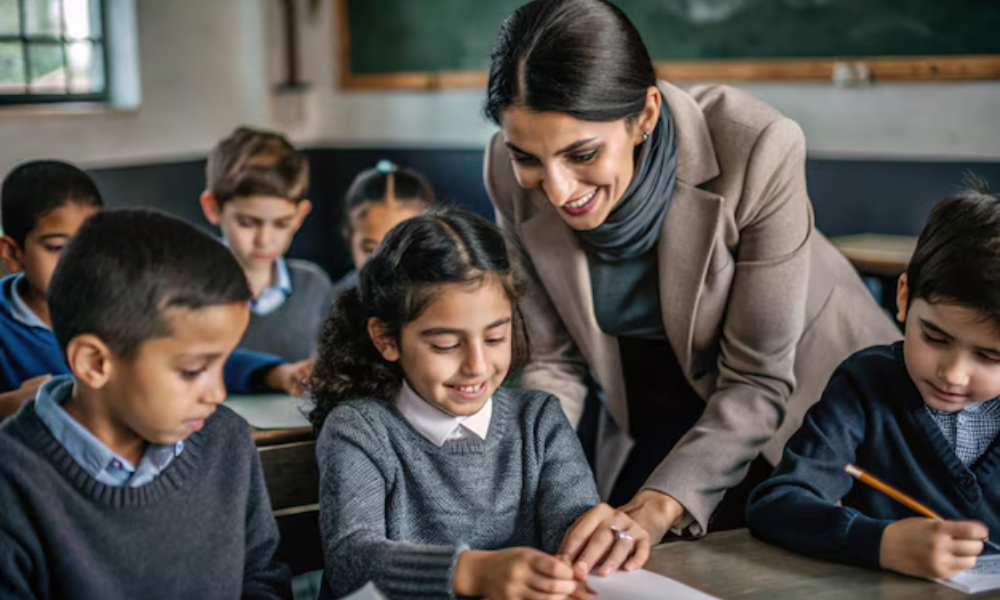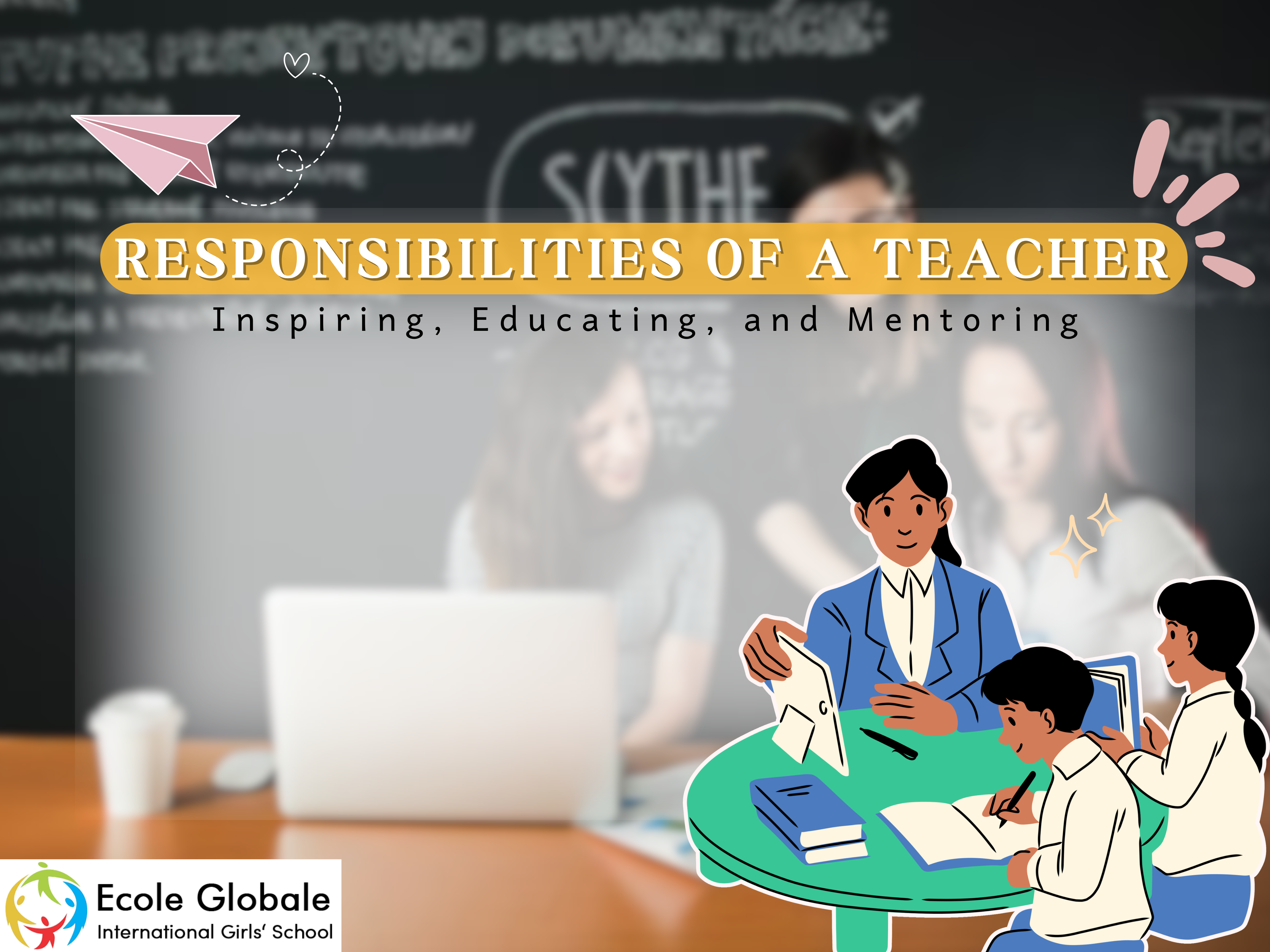The responsibilities of a teacher are diverse and critical in shaping the educational journey of students. Teachers are not only responsible for imparting knowledge but also for creating a supportive learning environment, managing the classroom, and continually developing their skills.
1. Overview of the Responsibilities of a Teacher

Role Summary
At the heart of the profession, the role of a teacher include facilitating learning and guiding student development.
Teachers are tasked with delivering lessons, encouraging participation, and fostering a positive environment where students can thrive both academically and personally.
Key Functions
The fundamental responsibilities of a teacher include:
- Teaching: Delivering structured lessons that promote understanding.
- Planning: Preparing lesson plans that align with the curriculum and cater to individual student needs.
- Student Evaluation: Assessing student progress through various forms of evaluation.
- Collaboration: Working with parents, colleagues, and administrators to support student success.
2. Core Responsibilities of a Teacher

Planning and Preparation
One of the primary responsibilities of a teacher is lesson planning. Effective planning ensures that lessons are well-structured and cater to the diverse learning styles of students. This responsibility includes:
- Understanding student backgrounds and creating lesson plans that are both engaging and inclusive.
- Utilizing a variety of teaching methods to address different learning preferences, from visual aids to interactive discussions.
Planning also involves adjusting lessons as needed to reflect classroom dynamics or new insights into student needs.
Student Engagement
A key element of the responsibilities of a teacher is fostering student engagement. Teachers must create a learning environment that encourages participation and keeps students actively involved in their education. This can be achieved by:
- Encouraging classroom discussions and providing opportunities for students to share their ideas.
- Using interactive teaching techniques, such as group activities or technology-enhanced lessons, to maintain student interest and promote deeper understanding.
Assessment and Evaluation
Another significant responsibility is the evaluation of student progress. Teachers are required to assess students through tests, quizzes, assignments, and observations. These evaluations help:
- Track student growth and identify areas that need further attention.
- Adapt teaching strategies to ensure that all students are progressing effectively.
Evaluation is not just about grading; it’s about understanding each student’s learning journey and providing the necessary support for improvement.
3. Support and Mentorship

One-on-One Support
Providing individual support is a crucial responsibility for teachers. This includes offering extra help to students who may be struggling and providing personalized guidance. Teachers fulfill this responsibility by:
- Holding one-on-one sessions to address specific learning challenges.
- Offering encouragement and strategies tailored to each student’s unique learning needs.
Role Modeling and Motivation
Beyond academics, one of the important responsibilities of a teacher is to act as a role model and inspire students.
Teachers are expected to demonstrate professionalism, ethical behavior, and a positive attitude, which students can emulate. By:
- Celebrating achievements and acknowledging efforts, teachers help build students’ self-confidence.
- Encouraging a growth mindset, teachers motivate students to overcome challenges and pursue excellence.
4. Administrative and Collaborative Duties

Classroom Management and Discipline
Effective classroom management is one of the key responsibilities of a teacher. This involves maintaining order, setting clear behavioral expectations, and creating an inclusive atmosphere. Teachers must ensure:
- The classroom is a safe space where students feel respected and supported.
- Discipline is maintained without compromising the well-being of the students.
Communication with Stakeholders
Teachers play a vital role in connecting with parents, school administrators, and other educators. Regular communication with these stakeholders is crucial for student success. Teachers often:
- Engage with parents during parent-teacher meetings to discuss student progress.
- Collaborate with fellow teachers to share insights and strategies that benefit the learning environment.
Administrative Tasks
Aside from teaching, the responsibilities of a teacher include several administrative duties such as:
- Keeping records of student attendance and performance.
- Managing classroom materials and ensuring learning resources are available and accessible.
5. Professional Development and Continuous Learning

Staying Updated
The field of education is constantly evolving, and teachers are expected to engage in continuous professional development.
This is an essential part of the responsibilities of a teacher, allowing them to stay informed about new teaching methodologies and technologies. Teachers should:
- Attend workshops, seminars, or online courses to improve their teaching skills.
- Reflect on their practices and make adjustments to enhance student learning experiences.
By staying updated, teachers ensure that they can provide the best possible education to their students.
Conclusion: The Teacher as a Mentor and Role Model
The responsibilities of a teacher extend far beyond the classroom. Teachers are mentors, guides, and role models who inspire students not only academically but also personally.
Their role is to provide a holistic learning experience, from lesson planning and student engagement to evaluation and classroom management.
Teachers must continually develop their skills, reflect on their practices, and remain flexible to meet the diverse needs of their students.
In conclusion, the responsibilities of a teacher are varied and impactful. Through dedication, planning, and continuous growth, teachers shape the future by fostering the development of young minds and helping them achieve their full potential.









